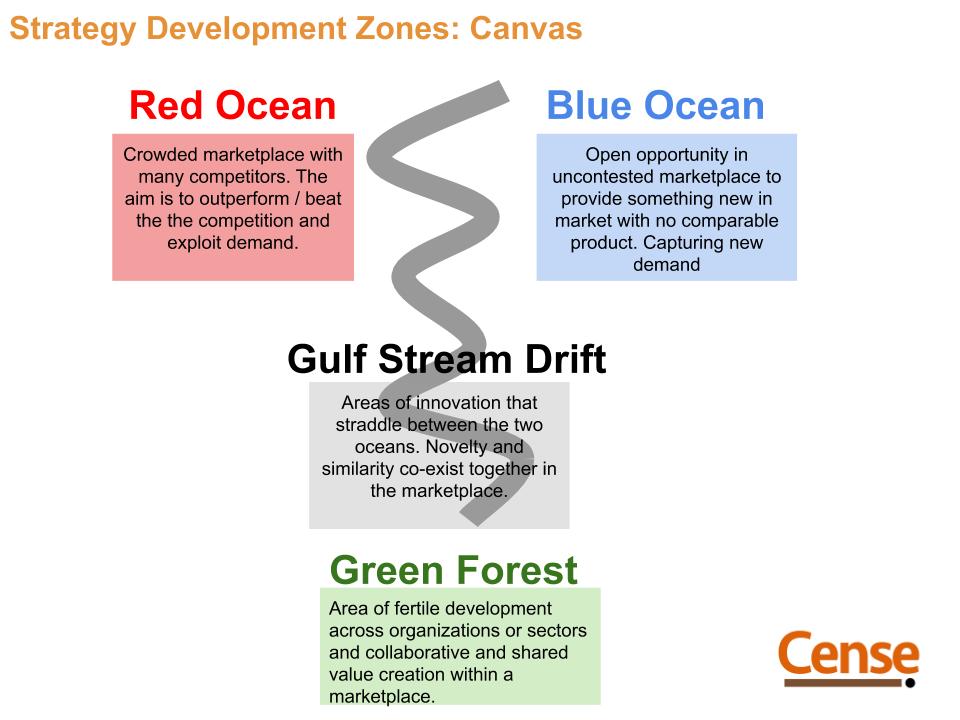This is an Eval Central archive copy, find the original at cense.ca.

Innovation development and execution are highly affected by what kind of environment you operate in. For innovators in business, the public sector, and healthcare questions abound like:
How can we determine what kind of market — whether it’s products, services, and policies — do we want to focus on? What does innovation look like in each of these? How do we align who we are with what we want to do?
We have developed a new tool for helping you navigate the various markets you are in, could be or would like to be in. The tool is available by clicking on the link.
Blue Ocean Strategy Framework
One of the popular approaches to conceptualizing the domains of organizational strategy is the Blue Ocean strategic model developed by Chan Kim & Renée Mauborgne. The model distinguishes Red Ocean from Blue Ocean environments or marketplaces where businesses compete**.
(** or any organization seeking to differentiate itself in the marketplace of ideas and attention — it’s not just for profit-seeking ventures)
The Blue Ocean Strategy Framework presents a dichotomy between zones of competition and makes the distinction that organizations are either creating their own path or competing within existing contexts.
This dichotomy is useful for business but neglects much of the work that is done within social innovation and public sector innovation where there are spaces of co-creation and collaboration that exist with and among partners by design and necessity. In these areas the need to work together across contexts and often in ‘co-opetition‘ where organizations who might compete for resources at one moment might also rely on those others to succeed.
To help understand this we’ve developed a useful framework (or canvas, when used as a tool) for considering two additional areas to address when developing a strategy. This framework — presented visually below — introduces two new zones of strategy that complement the red/blue ocean strategy.

Beyond Oceans
The two additional zones include the Green Forest and an interstitial area akin to the Gulf Stream or Atlantic Drift ocean currents that carry water from both zones, greatly influence the climate beyond them and provide a unique ecosystem between them.
The Green Forest is an environment that feeds off the ocean and the nutrients from the currents. It’s those areas of collaborative innovation where no single organization can create a true difference on its own and where there might not even be an advantage to doing so.
Organizations might operate in many different areas depending on their size and configuration, however, the projects and work that is done and the strategy required to generate it might require the kind of mapping and zonal ‘marking’ that allows it to avoid confusion and discover the needs and challenges it faces more effectively.
Consider using this model in your work. None of these are ‘good’ or ‘bad’ rather they describe environments and contexts of strategy that can guide your innovation development and deployment. Knowing what environment you are working within allows your organization to better strategically align its planning, resources, and operations to suit that context and succeed.
Note: Are you interested in exploring different strategic domains and want some help applying this framework to your organization? Contact us and we’ll show you navigating these different terrains can help you see more and do more in your organization than you ever thought possible.

Photo by Aviv Ben Or on Unsplash and by Fezbot2000 on Unsplash